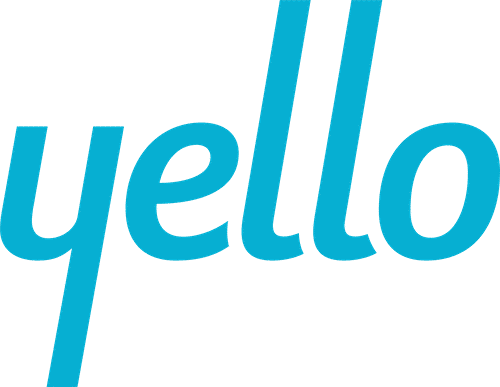Why Does the Post Offer Gap Matter?
Recruiting doesn’t end when a candidate signs the offer letter, especially in early careers. In fact, 52% of candidates continue to apply even after accepting a job offer.
While most professionals start within two weeks of accepting an offer, early career hires can wait up to eight months before their start date. That stretch, often called the post offer gap, is a critical stage where excitement can fade and competing opportunities can surface. Imagine accepting your first job and then not hearing from your new employer for months. It’s only natural for doubts to creep in.
The number of intern candidates that have reneged on an offer has doubled since 2021. Today, 10% of intern offers and 7% of new grad offers renege before day one. It’s expensive and disruptive. Each renege costs organizations an average of $4,700 per hire and leaves missed opportunities for other students who were eager to step in but accepted other roles.
It happens for many reasons: competing offers, life changes, financial stress, or simply silence during the waiting period. But the good news is, there are things you can control. By filling the post offer gap with intentional and consistent engagement, you can change the story. A thoughtful keep warm strategy protects your investment, builds trust, and strengthens connection before day one. With the right structure, communication, and purpose, you can turn that quiet period into a true competitive advantage.
Here are five steps to do it right.
Step 1: Set Clear Communication Expectations
Strong communication begins with alignment internally. To get started, map out with your team:
- Who owns communication (recruiter, hiring manager, peer buddy)
- What channels to use (email, Slack, Symba, etc.)
- Map the entire communication plan in advance like a project. Place everything on a calendar. Assign ownership and dates to each touchpoint.
If this is your first time building a keep warm strategy, start small. Aim for at least one touchpoint per month.
Then, set expectations with your new hires. From day one, let them know what to expect and when. Share:
- Timing: How often they’ll hear from you: biweekly, monthly, and more frequently as the start date nears.
- Format: Where updates will come from: email, text, or a community space like Symba.
- Contacts: Who they can reach out to for questions or support.
- Next steps: Any pre-start items, like background checks, mailing info for swag, or travel details.
Here’s a simple example of welcome message:
“Welcome, [Name]! We’re thrilled to have you on board. You can expect biweekly updates from us starting next week, and we’ll share key dates and milestones along the way. This month, you’ll be paired with your buddy and meet your manager. If you have any questions, reach out to us anytime at [email/contact]. We can’t wait to get started.”
That kind of clarity builds trust and removes guesswork. Within a few days of offer acceptance, send a warm, detailed welcome message that congratulates them, confirms their start date, and outlines what’s ahead.
Finally, make it personal. Mention their future team or something memorable from their interview. For early career hires entering the professional world for the first time, those small touches go a long way in building belonging and connection.
Step 2: Design Touchpoints That Build Connection
Now that you have your high-level communication plan in place, it’s time to drill down into the details and map out the engagement moments along the post offer journey. Each touchpoint should be purposeful, easy to deliver, and simple to digest while also reflecting your company culture.
Here are a few ideas to bring your plan to life:
- Send welcome kits, gifts, or swag. Who doesn’t love getting something thoughtful in the mail? Whether it’s a handwritten note, company hoodie, or snack box, it signals appreciation and builds early excitement. For inspiration, SnackNation has a list of 45 creative kit ideas here.
- Monthly new hire newsletters – Share quick updates, employee spotlights, and a countdown to day one. Make it visual and upbeat so it’s something they actually want to open.
- Peer buddy introductions – Connect new hires with a recent alum or team member who can answer informal questions. Encourage buddies to check in periodically. It’s a great way to lean on other stakeholders to participate in the program.
- Networking activities – Host virtual coffee chats or Q&As with current employees. Even a casual 20-minute Zoom can make new hires feel known. You can also get alumni to participate!
- Optional pre-start projects or learning opportunities – Offer a fun, no-pressure opportunity to explore your work. For example, a reading list, TED Talks, or a LinkedIn Learning Series. Make sure that your interns are not officially doing work.
- Company Spotlights – Share short videos from leaders or snapshots of company events. Invite them to observe an all-hands or community day if possible.
- Celebrate key milestones. Acknowledge birthdays, holidays, or “X months to go!” check-ins with a quick message or shoutout. It shows you’re paying attention and makes the waiting period feel active.
Employers like Hyster-Yale are leading the way. In a recent NACE blog, they shared their nine-week preboarding strategy built around weekly themes like culture highlights, team introductions, soft skill tips, and even social media challenges. It’s all designed to keep interns engaged, informed, and excited well before day one.
As you begin pulling these ideas into a plan of your own, remember you don’t have to build this alone. Tap into your team, alumni, or even your candidates to help shape something meaningful.
Pro Tip: For more inspiration, you can check out Symba’s Pre-Onboarding Checklist. It includes ideas for engaging intern candidates during the preboarding period, plus a sample workflow you can adapt or build on as you design your own strategy.
Step 3: Maintain Relevance and Balance
Now that your engagement plan is in motion, focus on keeping it fresh and digestible. The goal isn’t more communication, it’s smarter communication.
Early career hires are busy! They’re finishing school, preparing to relocate, or balancing other commitments. That means your timing, tone, and content all matter.
Mix up your formats and experiment with bite-sized content that keeps attention high without overwhelming. Try short videos, quick polls, AMAs, or light, visual emails that feel easy to consume. A simple note of encouragement during a busy time can make a lasting impression:
“Good luck on finals! We’re cheering you on and can’t wait to celebrate when you’re done.”
Keep every touchpoint purposeful. Focus each message on one or two takeaways and make it easy to respond or engage.
And don’t underestimate tone in your communications. Robotic or generic messaging, especially content that feels AI-generated or overly templated, can backfire. A well-intentioned note that reads as impersonal may do more harm than good.
Write like a human: warm, clear, and consistent with your brand’s personality. If you’re unsure, have someone from your communications or employer brand team take a quick pass before you hit send. A second set of eyes can help you fine-tune tone and clarity.
The best engagement feels timely, natural, and genuine. It should feel like an ongoing conversation, not a campaign.
Pro Tip: Once your engagement strategy is mapped out, look for ways to automate it with a solution like Symba. Discover how one Fortune 500 company freed up time and engaged 94% of their interns before day 1.
Step 4: Measure Engagement and Track Outcomes
You’ve designed the experience. Now it’s time to measure it. The most effective programs don’t just run engagement, they track it with intention and consistency.
Start by capturing every signal of participation and connection. Look at:
- Email open rates
- Event attendance
- Discussion activity
- Responses to polls or surveys
- Platform logins or community check-ins
These engagement signals tell you how your program is landing and where there may be friction or drop-off.
Then, connect the dots. Map engagement data against your talent outcomes. Are cohorts with higher participation seeing fewer reneges? Do programs with active peer buddies convert more interns to full-time hires? Is there a link between consistent engagement and stronger retention after onboarding?
This is where the data starts to tell a story and can help you identify what’s really moving the needle.
If you’re using a centralized new hire engagement platform like Symba, you can track all of this in one place. From email clicks to event RSVPs and community activity, having full visibility allows you to take a data-driven approach to retention and readiness.
Pro Tip: Don’t forget to ask your hires directly, too. A short pre-start reflection survey can surface what worked, what didn’t, and how your engagement made them feel leading up to day one. It’s one of the most valuable steps in optimizing your program for the next cohort.
Data is your compass. The more you track, the more you can improve.
Step 5: Learn, Optimize, and Evolve
Measuring is only the beginning. The real magic happens when you use those insights to refine and strengthen your approach.
Look at what’s working and double down. If virtual coffee chats consistently drive high participation, build more of them into your next cycle. If newsletters have low engagement, try bite-sized updates or new formats. The goal is continuous improvement with real insights and feedback to make each season more successful than the last.
Set clear goals for the next cohort: stronger offer-to-start rates, faster onboarding, higher satisfaction. Then share those wins internally to spotlight the program’s growth and gain well-deserved recognition. When you can connect engagement to retention and readiness, your post-offer strategy becomes more than a nice-to-have. It becomes a measurable business advantage.
Early career engagement is an evolving practice.
“You can’t feel that your pre-onboarding plan is ever final.” – Megan C. Moore, Hyster-Yale’s campus talent acquisition advisor [source].
Generational preferences shift, new technology emerges, and expectations evolve. The best programs stay flexible, listen closely, and adjust continuously.
Keep experimenting. Keep learning. And keep your candidates at the center of it all. Because the more intentional you are about the journey before day one, the stronger your workforce will be long after.
Closing the Gap for Long-Term Success
The post offer gap isn’t just a waiting period. It’s one of the most influential stages of the talent journey that’s often overlooked. Every message, check in, and touchpoint is a chance to reinforce your culture and build trust before day one. When done right, engagement during this stage doesn’t just reduce reneges. It accelerates readiness, boosts retention, and strengthens your employer brand from the inside out.
The organizations that will win the next generation of talent are the ones that treat the post offer experience as the start of the employee journey.
Beyond the Offer
This is Part One of our Beyond the Offer series where we explore what happens after recruiting, from preboarding to onboarding to long-term career growth. Stay tuned for the next article!



